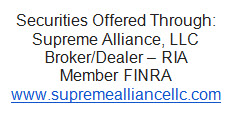SIMPLE IRA plans can provide a significant source of income at retirement by allowing employers and employees to set aside money in retirement accounts. SIMPLE IRA plans do not have the start-up and operating costs of a conventional retirement plan.
- Available to any small business – generally with 100 or fewer employees
- Easily established by adopting Form 5304-SIMPLE (PDF),-5305-SIMPLE (PDF), a SIMPLE IRA prototype or an individually designed plan document
- Employer cannot have any other retirement plan
- No filing requirement for the employer
- Contributions:
- Employer is required to contribute each year either a:
- Matching contribution up to 3% of compensation (not limited by the annual compensation limit), or
- 2% nonelective contribution for each eligible employee
- Under the “nonelective” contribution formula, even if an eligible employee doesn’t contribute to his or her SIMPLE IRA, that employee must still receive an employer contribution to his or her SIMPLE IRA equal to 2% of his or her compensation up to the annual limit of $285,000 for 2020 (subject to cost-of-living adjustments in later years)
- Employees may elect to contribute
- Employee is always 100% vested in (or, has ownership of) all SIMPLE IRA money
- Employer is required to contribute each year either a:
How does a SIMPLE IRA plan work?
Example 1:
Elizabeth works for the Rockland Quarry Company, a small business with 50 employees. Rockland has decided to establish a SIMPLE IRA plan for its employees and will match its employees’ contributions dollar-for-dollar up to 3% of each employee’s compensation. Under this option, if a Rockland employee does not contribute to his or her SIMPLE IRA, then that employee does not receive any matching employer contribution.
Elizabeth has a yearly compensation of $50,000 and contributes 5% of her compensation ($2,500) to her SIMPLE IRA. The Rockland matching contribution is $1,500 (3% of $50,000). Therefore, the total contribution to Elizabeth’s SIMPLE IRA that year is $4,000 (her $2,500 contribution plus Rockland’s $1,500 contribution). The financial institution holding Elizabeth’s SIMPLE IRA has several investment choices and she is free to choose which ones suit her best.
Example 2:
Austin works for the Skidmore Tire Company, a small business with 75 employees. Skidmore has a SIMPLE IRA plan for its employees and will make a 2% nonelective contribution for each of them. Under this option, even if a Skidmore employee does not contribute to his or her SIMPLE IRA, that employee would still receive an employer contribution to his or her SIMPLE IRA equal to 2% of compensation.
Austin’s annual compensation is $40,000. Even if Austin does not contribute this year, Skidmore must still make a contribution of $800 (2% of $40,000).
Pros and Cons:
- Easy and inexpensive to set up and operate
- Employees share responsibility for their retirement
- No discrimination testing required
- Inflexible contributions
- Lower contribution limits than some other retirement plans
Who Contributes: Employer must contribute and employee may contribute.
Contribution Limits: Total contributions to each employee’s SIMPLE IRA are limited.
Filing Requirements: An employer generally has no filing requirements.
Participant Loans: Not permitted. The assets may not be used as collateral.
In-Service Withdrawals: Yes, but includible in income and subject to a 10% additional tax if under age 59-1/2. Also, if withdrawals are made within the first two years of participation, the 10% additional tax is increased to 25%.
This information is not intended to be tax or legal advice, and it may not be relied on for the purpose of avoiding any federal tax penalties. You are encouraged to seek tax or legal advice from an independent professional advisor.


